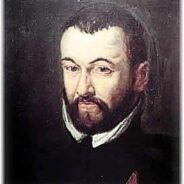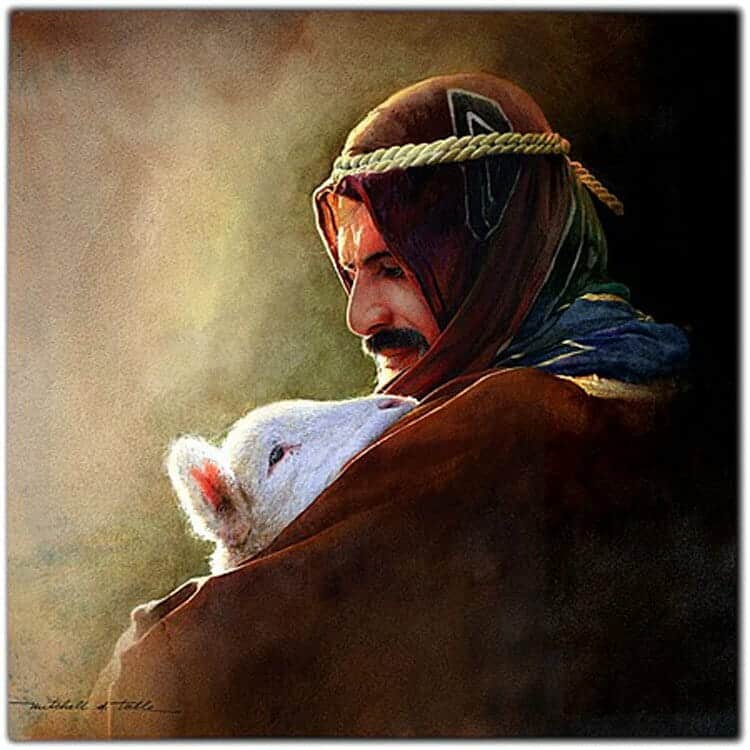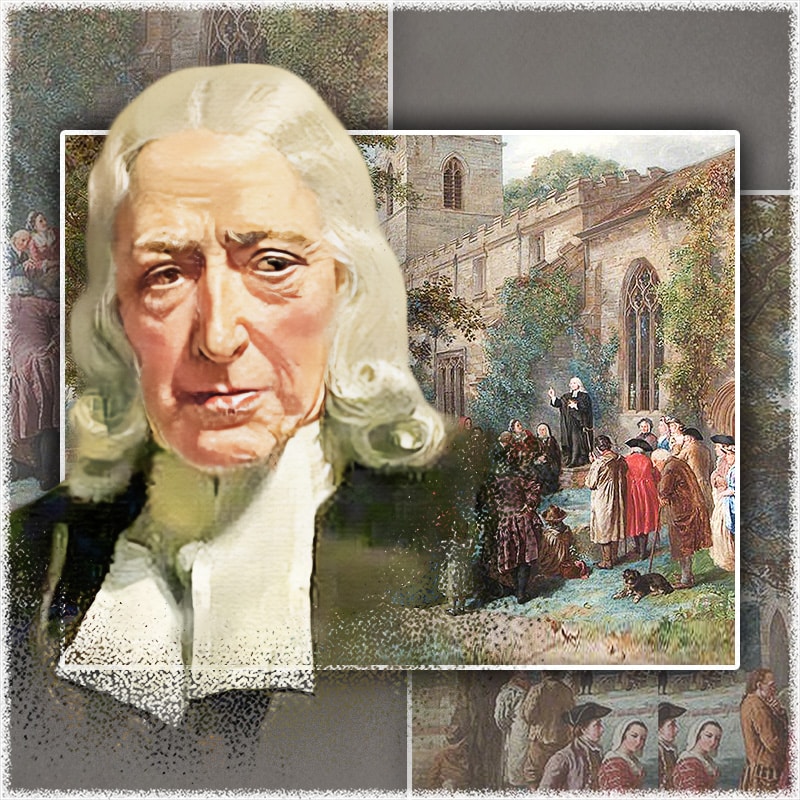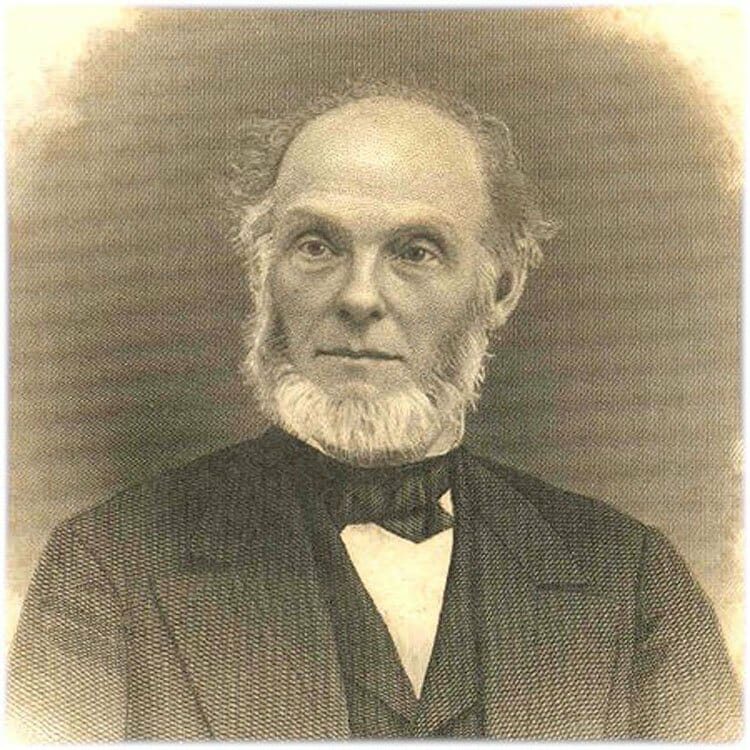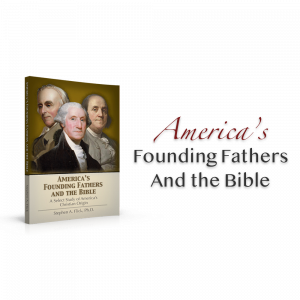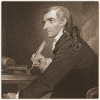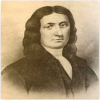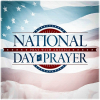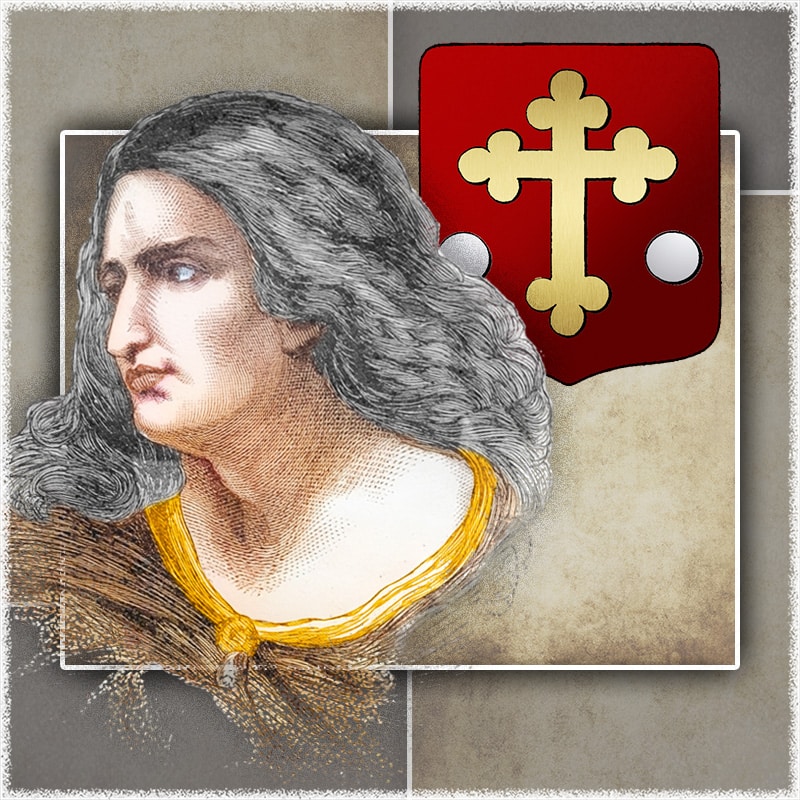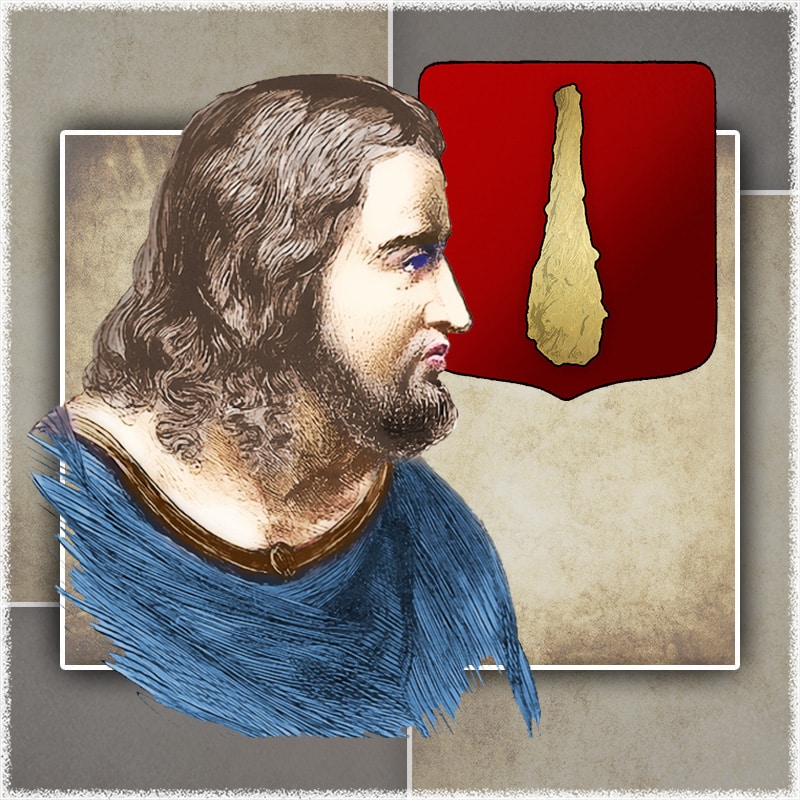In the early Christian Church, believers were forced to decide what books of Scripture they would be willing to die. If a book was not regarded as authoritative, conscience did not forbid them to surrender it to pagan authorities, but if a work was regarded as inspired and evidenced Divine authority, Christians were far less likely to part with it. Yet this was only one of the influences that gave rise to the development of the New Testament. The article below describes why certain books are authoritative to Christians and how they came to be so.
Table of Contents
The doctrine of revelation considers the subject of what is divinely revealed and the doctrine of inspiration concerns itself with the manner in which that revelation is reduced to a written form, but these doctrines would be incomplete without considering the character of the Bible as is determined by the boundaries of the documents that were divinely revealed and inspired. Both revelation and inspiration have manifested themselves in concrete written forms. The process by which certain books were recognized as possessing divine authority is known as “canonization.”
I. Important Subjects to Consider
In coming to a deeper appreciation of Scripture, three important subjects must be considered:
A. Revelation of Scripture
The term revelation should simply be regarded as the varied ways in which God has revealed both his being (existence) and nature (character) to the human race.
B. Inspiration of Scripture
How God impressed men to write the Bible.
C. Canonization of Scripture
How the books of the Bible came into the form in which we know them; how they were arranged.
D. Transmission of Scripture
How the books of the Bible were preserved and how they were translated into other languages.
II. Origin of the Term “Bible”
The English word “Bible” is derived from the Greek word biblos, meaning a scroll or little book. The term referred to the outer bark of the papyrus plant. Any book which leaves were made from the outer bark was called a biblos, and eventually all books were called biblos regardless of the material from which it was composed. The evolution of the terms that gave rise to the English word “Bible” is presented below:
| Century | Development |
|---|---|
|
11th B.C.
|
The outer coat of the papyrus reed was given the name biblos in Egypt during the eleventh century B.C. |
|
2nd A.D.
|
Christians used the term to refer to their sacred writings. |
|
4th-5th
|
Toward the end of the fourth century and the beginning of the fifth century, the Greek Christian writers began to call the books that composed the Bible, “The Books.” |
|
13th
|
In the thirteenth century, the writings that composed Scripture were known as “The Book.” The term “Bible” is an Anglicized form of the Old French word for Bible (biblia). The French depended upon the Latin biblia, which in turn was derived from the Greek biblos. |
III. The Bible is One Book
The Latin Vulgate had reigned in Christendom nearly a thousand years before Wycliffe produced the first English Bible. It is not surprising then that Wycliffe’s English Bible followed the same format or divisions, for both the New and Old Testaments, as the Latin Vulgate. Following the pattern established by the Vulgate, the divisions of the English Bible are arranged topically instead of officially (i.e., by rank or office of the author). The books, however, are semi-chronologically arranged from Genesis to Revelation.
The Bible is a library of sixty-six books written over a period of nearly 1,500 years. The Old Testament was written over nearly a thousand years (ca. 1400-400 B.C.) while the New Testament was written over a much shorter span of time, about fifty years (ca. 45-95 A.D.). Thomas Hartwell Horne (1780-1862) compiled the following statistics about the King James Bible in a three-year study:
| Number of . . . | Old Testament | New Testament | Total |
|---|---|---|---|
|
Books
|
39
|
27
|
66
|
|
Chapters
|
929
|
260
|
1,189
|
|
Verses
|
33,214
|
7,959
|
41,173
|
|
Words
|
593,493
|
181,253
|
774,746
|
|
Letters
|
2,728,100
|
838,380
|
3,566,480[1]
|
IV. The Bible Contains Two Testaments
The Bible is one book that is divided into two parts known as “testaments.” The Hebrew term that is translated testament, berith, means “covenant, compact, or arrangement between two parties.” The King James Version has often translated the Greek term diathèkè as “testament”, but subsequent translations have translated it as “covenant”. Orthodox Jews believe that God has retained the covenant He made with Abraham and his descendants, while Christians believe that God has established a new covenant with all mankind in the revealing of Jesus Christ. For this reason, Christians recognize two major divisions in the Bible: the Old and New Testaments.
V. Thematic Unity of the Bible
Often, it is suggested that the Old Testament has little or no significance for the New Testament Christian. The depreciation of the Old Testament is a direct result of the inability or unwillingness to recognize how they relate to each other. It is evident that God intended a thematic unity of Scripture.
Sermon on the Mount (Matt 5:17-19)
Parable of the Net (Matt 13:52)
VI. Division into Chapters and Verses[2]
Many are unaware of the fact that the Bible was not initially divided into chapters and verses. The following chronology provides insight into how chapters and verses were added to the Bible:
| Date | Development |
|---|---|
|
382
|
Jerome, under the appointment of Damascus bishop of Rome, began to translate the Scriptures from the Hebrew and Greek. For twenty-five years, Jerome continued his work of translation. In the end, Jerome produced the Latin Vulgate. For nearly 1,200 years, the Vulgate was the Bible of the Christian Church. |
|
1228
|
Stephen Langton, archbishop of Canterbury, divided the Vulgate into chapters. |
|
1455
|
The Vulgate was the first Bible to be printed by John Gutenberg. |
|
1551
|
Robert Stephens divided the chapters of the Vulgate into verses. |
|
1571
|
About twenty years later (1571), Arias Montanus numbered the verses that Robert Stephens had divided. |
I. Generally Defined
The term “canon” (kanw,n) literally means a straight rod or reed that was used for measuring. This term is often used in theological circles in two ways. The first, as is suggested by the active literal sense, is a test or standard by which something is measured or evaluated. The second sense in which the term is used is through application to what has been measured. In both senses is the term canon applied to the Bible.
II. Contextually Defined
Within the context of the Christian community, the term appears to have been first used by Amphilochius in his Catalog of Scriptures (ca. 380), though Athanasius uses the word canonical in his Festal Epistle (367). Amphilochius used the term in the two ways denoted above. First, it denoted a means of determining criteria for inclusion in Christian sacred writings. In this objective sense, the books of Scripture were measured against a standard or tests before they were considered part of an authoritative body of religious literature. Second, Amphilochius used the term to describe an index of all the constituent books of Christian Scriptures.[3] In this second or subjective sense, the books that were measured by standards or tests became the canon or Rule of Faith[4] (cf. Gal. 6:16) for the Christian Church. For this reason, canon has been defined as “the catalog of scared Books.” Since the time of Jerome, the term canon has been used subjectively and objectively.
I. Marcion the Gnostic (ca. 140-144)
Marcion, a prominent Gnostic, moved from his native Pontus to Rome about 140. He established his own canon that included an abridgement of Luke and ten of the Apostle Paul's epistles, excluding the Pastoral Epistles (I and II Timothy and Titus). As a result, Marcion was instrumental in forcing the early church to develop a canon.
II. Use of Apocryphal Books in the East
Another factor that led to the development of the New Testament canon was the use of apocryphal books by churches in the East.
III. External Pressure
A third factor that forced the Church to identify its canon was external to the Church. Emperor Diocletian ordered all sacred Christian books to be destroyed (303). Christians were forced to decide which books they were willing to die for and which books could be surrendered.
Development of the Old Testament
I. When Books Were Written
Except for several passages,[5] the OT was written in Hebrew, very likely between the early fifteenth to early fifth century B.C. (ca. 1440 to 430 B.C.). The following chronology is a rough estimate of when the Old Testament books were written from a conservative position. Additional dates of important events and people have been added to provide a context for the writing of these materials:
| B.C. | Important Events, People, and Writings |
|---|---|
|
2100-1700
|
Patriarchs (the exact dating of the Patriarchs is not known) Abraham (2166-1991) Isaac (2066-1886) Jacob (2006-1859) Joseph (1915-1805) |
|
1730
|
Israel made slaves in Egypt, BC. |
|
1400
|
Genesis, Exodus, Leviticus, Numbers, Deuteronomy. Moses is credited with having written the first five books of the Bible, called the Pentateuch or Law of Moses (called the Torah by the Jews). Moses was the first of a long line of prophets that God used to reveal his Word (cf. Numbers 11:25). |
|
1400
|
Job(?). The author and date of Job are unknown; it is believed to be one of the oldest books in the Bible and the world in general. |
|
1377-1056
|
Early date for Judges (There are two other suggested late dates for the Judges: 1220-1050 and 1200-1020 BC.) The Judges listed in the Bible are: Othniel Ehud Shamgar Deborah Gideon Tola Jair Jephthah Ibsan Elon Abdon Samson (It is possible that there were other judges, but these are the only ones mentioned in the book of Judges.) |
|
1350
|
Joshua. It is believed that Joshua recorded the death of Moses (Deut. 34) and that he wrote most of the book of Joshua. |
|
1050
|
Judges and Ruth. These two books span a period of time from Joshua to Samson. Judges record a time of great sinfulness in Israel's history while Ruth presents a beautiful picture of those who remained faithful to God. Ruth was the great grandmother of David. These two books cover a period of time from Joshua to Samson. |
|
1050-930
|
United Monarchy (Other chronologies will vary from the dates presented here.) Saul (1050-1010) David (1010-970) Solomon (970-930) |
|
1000
|
Psalms (the majority of the Psalms were written about this period). David was the chief author of the Psalms, but I Chron. 25:5 and II Chron. 29:30 tell us that other prophets of God, such as Herman and Asaph, were also active in waiting as well. |
|
1000-575
|
I, II Samuel, and I, II Kings. |
|
950
|
Proverbs, Ecclesiastes, Song of Solomon. King Solomon wrote Ecclesiastes, the Song of Solomon, and most of Proverbs. |
|
930-721
|
Divided Monarchy Israel (930-721) Judah (930-586) |
|
750-700
|
Isaiah, Hosea, Joel, Amos, Obadiah, Jonah, Micah. These prophets both warned and comforted Israel during the Assyrian menace. |
|
740-612
|
Assyria rises to a world power |
|
721
|
Fall of Israel to Assyrian Empire |
|
625-575
|
Jeremiah, Nahum, Habakkuk, Zephaniah. These prophets ministered to the dying kingdom of Judah; most of whom predicted the fall of the Assyrian Empire, which occurred ca. 612, BC. |
|
600-539
|
Ezekiel, Daniel |
|
612-539
|
Babylon rises to a world power |
|
606
|
First Exile of Judah |
|
597
|
Second Exile of Judah |
|
586
|
Third and final exile of Judah that resulted in the complete destruction of Jerusalem and fall of Judah to the Babylonian Empire |
|
538
|
Decree of Cyrus for Jews in Babylon to return to Judah |
|
536
|
First return of Jews to Judah under the leadership of Shesh-Bazzar |
|
536-515
|
Haggai, Zechariah. These two prophets encouraged the Jews who had returned to Palestine to rebuild the second temple; the task was accomplished about 516 B.C. |
|
475
|
Ester. The story of how Ester became queen in Mesopotamia shows God's providential care over the Jewish captives who did not return to Palestine in 538 B.C. |
|
456-400
|
I, II Chronicles(?). |
|
456-400
|
Ezra, Nehemiah, Malachi . These three books were written after the Jews' return to Palestine. Malachi, the last of the Minor Prophets, was completed in 400 B.C. Jewish tradition suggests that there was no prophet until John the Baptist, who announced the coming of the new age. |
II. How Books Were Arranged
Through the passing of time, the structure and organization of the Old Testament has changed. The following chart reflects the structural development of the Old Testament. The structure of the Protestant Bible is significantly different from that of the original structure established by the Jews. The following chart reflects the progress of the literary structure of the Protestant Bible:
| Era | Development |
|---|---|
|
Earliest Division of Hebrew Bible
|
Two-fold division The earliest division of the Hebrew Scriptures appears to have been two-fold, the Law and the Prophets. Common New Testament usage, Jewish usage, and the Dead Sea Scrolls support this division. (See R. Laird Harris, Inspiration and Canonicity of the Bible, 146ff.) |
|
Less Ancient Times
|
From the two- to three-fold division By the time of Christ, a threefold division was recognized, though it was common to continue to refer to all of the Old Testament in its two-fold form. This three-fold division (the Law, Prophets, and Writings or psalms) was recognized by Christ in Luke 24:44, “He said to them, ‘This is what I told you while I was still with you: Everything must be fulfilled that is written about me in the Law of Moses, the Prophets and the Psalms.” Though the number varies, the Hebrew Scriptures have the same books as the Protestant OT. The only difference is the way in which the books are divided. In the Hebrew Scriptures, there are twenty-four books (twenty-two if Ruth is attached to Judges, and Lamentations is attached to Jeremiah), while the Protestant OT contains thirty-nine canonical books. In the Hebrew canon today, there are thirty-nine books; however, the order of the ancient canon is preserved in the threefold division. |
|
Between 285-
246 B.C.
|
From Three- to Four-fold Division Ancient Jewish tradition suggests that Ptolemy II (285-246 B.C.) requested that a Greek translation of the Jewish Scriptures be made during his reign. Jewish tradition further suggests that seventy-two Jewish scholars translated the Hebrew Old Testament into Greek in Alexandria, Egypt over a remarkable period of only seventy-two days. The resulting work was called the Septuagint (frequently “LXX, “ for seventy, is used to designate the Septuagint). Jews who had grown up outside of Palestine, and as a result, were unable to read Hebrew thereafter used the Septuagint. The Septuagint filled the need of the Greek speaking Jews for their Scriptures. It was the Alexandrian tradition that divided the Old Testament according to subject matter: Law (5 books); history (12 books); poetry (5 books); prophecy (17 books). In time, the Protestant OT followed the four-fold division of the Septuagint. For the most part, New Testament writers quote from the Greek Septuagint when quoting from the Old Testament. The Septuagint was also the most widely read form of the Old Testament in the early Church. It should be noted that eventually the books of the Apocrypha were placed in the Septuagint. However, the original Septuagint only contained the canonical books of the OT. |
|
|
Modern Division of Old and New Testaments The Latin Vulgate had reigned in Christendom nearly a thousand years before Wycliffe produced the first English Bible. It is not surprising then that Wycliffe’s English Bible followed the same format or divisions, for both the New and Old Testaments, as the Latin Vulgate. Following the pattern established by the Vulgate, the divisions of the English Bible are arranged topically instead of officially (i.e., by rank or office of the author). The books, however, are semi-chronologically arranged from Genesis to Revelation. |
Development of the Old Testament Canon
| Dates | National Events | Canonical Books | Probable History of the Manuscripts and Copies |
|---|---|---|---|
|
1500 B.C.
| |||
|
Original Pentateuch
Job?
Joshua added
|
Original Pentateuch scrolls stored beside ark
| ||
|
1400 B.C.
| |||
|
1300 B.C.
| |||
|
1200 B.C.
| |||
|
1100 B.C.
| |||
|
Shiloh destroyed by Philistines and Tabernacle moved
|
Original scrolls dispersed and new copies made (?)
| ||
|
Judges and Ruth added
Davidic Psalms written
| |||
|
1000 B.C.
|
Samuel, David and Levites distribute copies throughout Israel
| ||
|
900 B.C.
|
Proverbs, Ecclesiastes, Song of Solomon, Samuel added
| ||
|
Obadiah
|
Copies taken to Norther Kingdom during Elijah's reform (?)
| ||
|
800 B.C.
|
Joel
| ||
|
Assyrians capture Samaria
|
Jonah
Amos
Hosea
Micah
Isaiah
|
Kings written by a succession of prophets and collected and edited by Jeremiah (?)
| |
|
Copies obtained by priests at order of Sargon II (II Kings 17:27-28) ?
| |||
|
700 B.C.
| |||
|
Nahum
Habakkuk
Zephaniah
|
Book of the Law recovered in the Temple
| ||
|
600 B.C.
|
Ezekiel, etc. taken captive; Jerusalem destroyed
|
Ezekiel
Jeremiah, Lamentations
Kings
|
Copies brought to the people from Jerusalem during Josiah's reform (II Chron. 34:6-9, 21) ?
|
|
Cyrus captures Babylon; Temple rebuilt
|
Daniel,
Haggai,
Zechariah added
| ||
|
500 B.C.
| |||
|
Ezra returns to Jerusalem
|
Esther, Ezra, Chronicles, Nehemiah added
|
Copies taken to Samaria at time of Nehemiah' s exclusion (Neh. 13:28-30) ?
| |
|
400 B.C.
|
Malachi added
|
I. Acceptance of Old Testament Books (ca. 1400-400 B.C.)
The classification listed below was instrumental in determining the books which were to be included into the Old Testament.
| Regard for Books | Category of Books | Description |
|---|---|---|
|
Books Accepted
|
Homologoumena[7]
|
The homologoumena were those thirty-four books that were never seriously questioned by orthodox circles. |
|
Books Locally Questioned
|
Antilegomena
|
The antilegomena were those five books that were questioned by some for a time, but were finally and fully recognized generally. They include the books of Song of Solomon, Ecclesiastes, Esher, Ezekiel, and Proverbs. |
II. Arrangement of Old Testament Books[8]
| According to English Bible (following the LXX, Septuagint) 39 Books | According to The Talmud 24 Books | According to Josephus 22 Books |
|---|---|---|
|
The Law (5) Genesis Exodus Leviticus Numbers Deuteronomy |
The Law (Torah) Genesis Exodus Leviticus Numbers Deuteronomy |
The Law (Torah) Genesis Exodus Leviticus Numbers Deuteronomy |
|
History (12) Joshua Judges Ruth 1 and 2 Samuel 1 and 2 Kings 1 and 2 Chronicles Ezra Nehemiah Ester |
The Prophets (Nebhiim) Former Prophets: Joshua Judges Samuel Kings Latter Prophets: Isaiah Jeremiah Ezekiel The Twelve |
The Prophets (Nebhiim) Former Prophets: Joshua Judges-Ruth Samuel Kings Latter Prophets: Isaiah Jeremiah-Lamentations Ezekiel The Twelve |
|
Poetry (5) Job Psalms Proverbs Ecclesiastes Song of Solomon |
The Writings (Kethubim or Hagiographa) Poetical Books Psalms Proverbs Job Five Rolls (Megilloth) Song of Songs Ruth Lamentations Esther Ecclesiastes Historical Books: Daniel Ezra-Nehemiah Chronicles |
The Writings (Kethubim) Poetical Books Psalms Proverbs Job Five Rolls (Megilloth) Song of Songs Esther Ecclesiastes Historical Books: Daniel Ezra-Nehemiah Chronicles |
|
Prophecy (17) Major Prophets (5) Isaiah Jeremiah Lamentations Ezekiel Daniel Minor Prophets (5) Hosea Joel Amos Obadiah Jonah Micah Nahum Habakkuk Zephaniah Haggai Zechariah Malachi |
|
Note: The “major books” of prophecy are designated so because of their length, not because they are more important.
The Apocrypha: Additions to the Old Testament
I. Period of Writing (ca. 200 B.C.-100 A.D.)
In some versions of the OT, there appear fourteen extra books. These books are known as the Apocrypha, meaning “hidden away.” These books were probably written between 200 B.C. and 100 A.D., though the exact date is difficult to determine. It seems that Jerome was the first to designate these books as the Apocrypha. In both the Greek Septuagint and the Latin Vulgate, these books are scattered among the canonical books. Martin Luther was the first to separate the books of the Apocrypha from the canonical books. The fourteen books of the Apocrypha are I and II Esdras, Tobit, Judith, Additions to Esther, The Wisdom of Solomon, Ecclesiasticus (also known as the Wisdom of Sirach), Baruch, Susanna, The Song of the Three Children, Bel and the Dragon, The Prayer of Manasseh, and I and II Maccabees.
Sometimes the books not in the canon are called ecclesiastical and deuterocanonical in addition to apocryphal.
II. Exclusion of the Apocrypha from Canon
The Apocrypha are not found in any catalog of canonical books in the first four centuries of the Christian Church. The following outline demonstrates the exclusion of the Apocrypha from the cannon of the Protestant OT:
| Date: | Development: |
|---|---|
|
128
|
Aquila's Greek version did not contain the OT Apocrypha, nor did Symmachus' version (200). |
|
164
|
Justin Martyr excluded the Apocrypha from authoritative books. |
|
170
|
The Eastern Church nearly unanimously rendered a verdict against the Apocrypha. The lists of Melito (170) do not list the Apocrypha. The Greek Orthodox Church, however, subsequently pronounced the Apocrypha canonical in the seventeenth century and uses them today. |
|
220?
|
The early Western Church also held to the Hebrew canon, excluding the Apocrypha from a list of authoritative books. Tertullian of Carthage, North Africa (150-220) lists the 24 books of the Hebrew Scriptures as the only canonical books of the OT. |
|
254
|
Origen excluded the Apocrypha. |
|
363
|
The Council of Laodicea excluded the Apocrypha. |
|
420?
|
Jerome (340-420), translator of the Latin Vulgate, repeatedly insisted that the Apocrypha should not be placed among the canonical books. In opposition to Jerome’s efforts, Augustine of Hippo (354-430), surprisingly, was instrumental in securing for the Apocrypha a place among the canonical books of the OT. |
|
1534
|
After translating the books of the Hebrew in his German translation of the Bible (1534), Luther placed the apocryphal books between the canonical books of the Old and New Testaments. |
|
1539
|
The prologue of the Great Bible (1539) quoted Jerome's statement that the books of the Apocrypha were not authoritative as were the canonical books, yet they were regarded as being edifying. |
|
1560
|
The Geneva Bible (1560) insisted that the apocryphal books should not be used in deciding matters of doctrine. |
|
1590
|
Some of the Geneva Bibles began to appear without the Apocrypha. |
|
1611
|
The King James version appeared with the Apocrypha between the books of the Old and New Testaments. |
|
1629
|
Under Puritan influence, some copies of the King James version began to appear without the Apocrypha. But one translator of the King James who became Archbishop of Canterbury decreed that anyone publishing the KJV without the Apocrypha should be imprisoned for one year. |
|
1827
|
The National Bible Society of Scotland petitioned the British and Foreign Bible Society not to print the Apocrypha. In 1827, the BFBS voted to discontinue the printing of the Apocrypha. This signaled the end of the printing of the Apocrypha in Protestant Bibles in general. |
|
1939
|
The twentieth century witnessed a resurrection of the use of the Apocrypha among Protestants. In 1939, Edgar J. Goodspeed popularized the Apocrypha with his An American Translation: The Complete Bible. After appearing in 1961, the New English Bible: New Testament appeared in its completed form in 1970, including the Apocrypha. |
Canonization of the Old Testament (ca. 1404-424 B.C.)
By 424 B.C., all of the books of the OT were written. Tradition suggests that the last five OT writers were influential in establishing the canon of the OT. It is believed that Ezra was most influential in this process, perhaps being supported by Nehemiah, Haggai, Zechariah, and Malachi . The oldest surviving list of OT books was made by a Christian scholar named Melito of Sardis about 170 A.D. Melito had personally traveled to Palestine to determine both the order and number of books in the OT.[9]
I. The Pentateuch
The Bible fails to describe the process of canonization, yet it does describe the preservation of sacred writings. Preservation is not canonization, though it does describe the process by which a writing assumed a position of value and authority. The “Book of the Law” or the Pentateuch assumed such a place of authority in the life of Israel. Moses' writings were entrusted to the Levites who kept it by the side of the Ark in the Holy of Holies, the most sacred part of the Tabernacle (Deut. 31:24-26). What God had commanded Moses was to be carried out by Joshua (Josh. 1:7-8). Inspiration of the Pentateuch, one criterion for canonization, is affirmed thirty-two times in the NT.
II. The Prophets
Jesus placed the prophets on the same authoritative level with the Law (Matt. 5:17; 7:12; 22:40; Luke 16:16, 29, 31; 24:27, 44). The Apostle Paul expounded upon the kingdom of God from the Law of Moses and the prophets (Acts 28:23). In the NT, the prophetic books of the OT are called “Scripture” forty-three times.
III. The Writings
The Writings, in the NT, are referred to thirty-seven times as “Scripture.” The inspiration of the OT was crucial in determining what OT books were canonical.
Reaffirmation of Jewish Canon (ca. 90-100?)
With the permission of the Romans, Jewish scholars obtained permission to reconstitute the Sanhedrin for purely spiritual purposes at Jabneh or Jamnia. This occurred following the destruction of Jerusalem (70, AD), sometime between 90-100. The purpose was to discuss the canon of their Scripture given the fact that numerous Christian works were circulating, requiring a definitive body of authoritative literature, distinguishing between the ancient Scripture and the newly circulating Christian writings.[10]
Verification of Old Testament Canon
I. The Septuagint (ca. 280-180 B.C.)
The Septuagint provides further evidence that there was clearly an established canon for the Hebrew sacred writings. The translation of the Septuagint began about 280 and continued for nearly one hundred years. All thirty-nine books of the Protestant OT were included in the Septuagint (though the book of Ester was discussed to a certain degree at the time of Christ).
II. Jesus Ben Sirach (ca. 132 B.C.)
In his Prologue to Ecclesiasticus, Jewish author, Jesus son of Sirach, provides further evidence that the Jews recognized a three-fold canon. Jesus' Prologue was written in 132 B.C. as a preface to the Greek translation of his grandfather's Book of Ecclesiasticus. In it, Jesus mentioned twice that the Jews recognized the OT as a whole, under the threefold division, “the law, the prophets, ant the others.” This threefold division was continued until Jamnia (ca. 90 A.D.).
III. The Teaching of Jesus (ca. 27-30 A.D.)
Christ also demonstrated a knowledge of the OT canon when he referred to the martyrdom of Abel and Zachariah (Luke 11:51; Matt. 23:36)—the first and last martyrs in the Hebrew canon, Abel being the first (in the book of Genesis) and Zachariah being the last (Chron.). Christ himself alluded to the threefold division of the OT in Luke 24:44.
IV. The Jewish historian, Josephus (ca. 100 A.D.)
In his treatise Against Apion, Josephus supports the idea that the canon of the OT had been established soon after the time of Malachi . He indicated that the time in which the sacred books of the Jews were written extended from Moses to Artaxerxes (who reigned from 465-425 B.C.). The Jews refused to alter the number of books in any way.
I. The Mishnah (ca. 200)
About 200 A.D., Jewish traditional writings were written down in a book called the Mishnah. The Mishnah is nearly a thousand pages in length and provides instruction to the Jews relating to daily living (the Halakah, or “the way to walk”).
II. The Talmud
The Talmud was compiled about 500 A.D. It is thirty-six volumes were based upon the Mishnah, but contain additional materials, some of which are famous stories known as the Haggadah . The Torah, Mishnah, and Talmud rule every facet of the Orthodox Jew's life.
Development of the New Testament
I. Structure of the New Testament
The Septuagint established a four-fold division of the books of the Old Testament that was utilized by Protestants. A four-fold pattern of division is also employed in the New Testament. Each of the four divisions and the books which constitute them are presented below:
A. Gospels (4)
Matthew
Mark
Luke
John
B. History (1)
Acts of the Apostles
C. Epistles (21)
1. Pauline Epistles (13)
Romans
1 and 2 Corinthians
Galatians
Ephesians (prison epistle)
Philippians (prison epistle)
Colossians (prison epistle)
1 and 2 Thessalonians
1 and 2 Timothy (pastoral epistle)
Titus (pastoral epistle)
Philemon (prison epistle)
Hebrews[11]
2. Catholic Epistles (7)[12]
James
1 and 2 Peter
1, 2 and 3 John
Jude
D. Prophecy (1)
Revelation
II. When New Testament Books Were Written
Though the exact date when many of the books of the New Testament were written cannot be determined, internal and external evidence suggests the following dates:
| Date: | Development: |
|---|---|
|
45
|
Matthew (Early Church Father, Papias, suggests that Matthew first wrote his gospel in Aramaic; the Greek is believed to have appeared about 50 A.D.). |
|
45-48
|
James. It is not known whether the individual who wrote this book was one of the apostles, was a brother of Jesus, or whether he was a cousin of Jesus. This is also true with regard to the authorship of Jude. |
|
50
|
I and II Thessalonians. It is very likely that the Apostle Paul wrote First and Second Thessalonians on his second missionary journey; it does not appear that the Apostle wrote any of his Epistles on his first missionary journey. |
|
54-55
|
I and II Corinthians. These Epistles are believed to have been written during Paul's third missionary journey. |
|
55-56
|
Galatians. The exact date in which the Apostle Paul wrote this Epistle is uncertain, but is believed to have been written during his third missionary journey. |
|
56
|
Romans. Along with I and II Corinthians and Galatians, Paul is believed to have penned his letter to the young church at Rome during his third missionary journey. |
|
58
|
Luke (written before 61, A.D.) |
|
60
|
Colossians, Philemon, and Ephesians (about the middle of Paul’s two year imprisonment at Rome; the first three of four prison epistles). The Apostle Paul was arrested in Jerusalem and imprisoned for two years in Palestine before being sent to Rome for another two years of imprisonment. It is believed that these Epistles were written during this period of Paul's life, hence they are called “prison epistles”. Philippians also originated within this era, though slightly later. |
|
61
|
Acts appears to have been written by Luke, author of the gospel that bears his name, and is a sequel to that gospel. |
|
61
|
Philippians (The last of the four Prison Epistles). This letter was also written during the first of Paul's two imprisonments at Rome. |
|
64- 65
|
I Timothy and Titus. These two letters (and possibly the book of Hebrews) were written during a period of liberty for the Apostle Paul. Following his two-year imprisonment in Palestine and additional two years of imprisonment in Rome, Paul was released for a period of time before being imprisoned for a second time in Rome. During this period of freedom, the Apostle is beginning to be lead by the Spirit to prepare other men for leadership within the young Christian Church. |
|
65
|
I Peter. |
|
66-67
|
II Peter. |
|
67-68
|
II Timothy (just before Paul's death). After a period of liberty that followed two-year imprisonments in both Palestine and Rome, the Apostle Paul was again imprisoned for a second time in Rome and subsequently martyred. During this second and final imprisonment, Paul wrote Second Timothy. |
|
67-68
|
Mark (soon after Peter's death). Papias indicates that Mark wrote the second gospel as Peter's helper and interpreter in Rome. Mark seems to have been written with Gentiles in mind—perhaps for the Romans to whom Peter ministered. |
|
67-69
|
Hebrews. The Author of Hebrews is uncertain. Many attribute it to the Apostle Paul. However, it is more likely that it should be identified with someone who was close to the Apostle. |
|
70
|
Jerusalem and the temple, with its sacrificial system are destroyed following a Jewish uprising. |
|
75-80
|
Jude. It is not known whether the individual who wrote this book was one of the apostles, was a brother of Jesus, or whether he was a cousin of Jesus. This is also true with regard to the authorship of James. |
|
85-90
|
Gospel of John, I, II, and III John. |
|
95-96
|
Revelation |
Canonization of the New Testament (ca. 45-393)
Not all books that circulated among Christians were regarded as having equal authority. Eventually the books were classified by the Church, believing itself to be led by the Spirit in the selection process. The classification listed below was instrumental in determining the books which were to be included into the New Testament.
I. Books included in the Canon
| Book | Type | Description |
|---|---|---|
|
Books Accepted
|
Homologoumena[13]
|
The homologoumena were those twenty books of the New Testament that were never seriously questioned by orthodox circles. |
|
Books Locally Questioned
|
Antilegomena
|
The antilegomena were those seven books that were questioned by some church Fathers for a time, but were finally and fully recognized by the church generally. They include the books of Hebrews, James, 2 Peter, 2 and 3 John, Jude, and Revelation |
II. Books Excluded From the Canon
| Book | Type | Description |
|---|---|---|
|
Books Locally Accepted
|
Apocrypha
|
Apocrypha were those books that, though of quality and historical and theological value, were never widely nor finally considered to be canonical. These were frequently of local and temporary value. |
|
Books Never Accepted
|
Pseudepigrapha
|
Pseudepigrapha books were never accepted by anyone as authentic or canonical. |
How the New Testament Canon Emerged
I. Era of Inscripturation (ca. 30-95)
At the time of Christ's death, not one of the books of the New Testament had been written. By the end of the first century, each of the twenty-seven books that constitute the New Testament had been written.
| Date | Description |
30-95, ca.
|
For about twenty years, the teachings of Christ were circulated orally (2 Thess. 2:15; 3:6; Luke 1:4). The entire NT was written between 45 or 50 and the end of the first century. |
|---|---|
|
Quite early in the history of the church, allusions are made to a collection of works that maintain a place of prominence in the church’s life. This initial awareness constitutes the first efforts to recognize the entire canon of the New Testament. The first indication of any notice of the New Testament existing, to some degree, in a collected form occurs in 2 Peter 3:16, where the writer places the Apostle Paul’s writings along side “other Scriptures.” |
II. Era of Tradition (ca. 95-170)
Following the writing of the books of the New Testament, the canon was identified and formalized over a period of nearly three hundred years. This period may be divided into three eras. The first era extends from the penning of the last book of the New Testament (ca. 95) to the time of Hegesippus (ca. 170), one of the earliest of Church historians, whose works are for the most part lost. Hegesippus, a Jew, was converted to Christianity and traveled to Rome about 168, where he died under the reign of Commodus, about 180.
| Date | Description |
|---|---|
|
95-170, ca.
|
During much of the first half of the second century, there was no serious debate or official pronouncement related to the canon. Late first/early second century. Leaders in the church at Ephesus apparently collected Paul's letters. Early second century. The Gospels were collected by the early second century. It is evident from the use of some of the New Testament writings (as well as the Old) in worship that there was an appreciation for these works very early in the life of the church. This is not to suggest that there was a recognized collection, but it does show the esteem that the church had for individual writings. The writings of the Apostolic Fathers, Apologists, and Polemicists prepare the way for the eventual acceptance of the entire New Testament canon on a level with that of the Old. See Justin Martyr, Apology, 1, 66 and Ignatius, Ep. Ad Smyrn., c. 7. |
|
In the anonymous work, the Epistle of Diognetus which is believed to be one of the earliest Christian writings, the author recognizes four divisions within the Scriptures which the early church held to be authoritative: the Law, the Prophets, the Gospels, and the Apostles. | |
|
Ignatius, also known as Theoyhorus, refers to an authoritative body of literature for believers when he speaks of “betaking himself to the Gospel as the flesh of Jesus, and to the apostles as the presbyters of the Church,” and adds, “the prophets also we love” (Ad Philadelphenos). | |
|
120, ca.
|
Irenaeus (whose birth cannot be accurately determined, ca. 120-140) refers to the New Testament as “the Holy Scriptures,” placing them on a level equal with the Law and Prophets (Adversus Haereses, 1:3, 6, 8; 2:27). |
III. Era of Speculation (ca. 170-303)
A second era in the development of the New Testament canon extends from 170 to the persecution of Diocletian (303). The Diocletian persecution forced the Church to ask itself what works were divinely inspired, and therefore worthy of the greatest sacrifices to protect, and which books lacked divine inspiration. This era forced the Church to more carefully consider what was divinely inspired.
| Date | Description |
|---|---|
|
140-220
|
A heretic named Marcion (150-200) formulated his own canon of New Testament writings without the appreciation for the Old Testament books which had been regarded as inspired Scripture by all faithful Christians to this point in history. Because of his anti-Jewish views, Marcion left any and all references to the Jews out of his collection of “authoritative” writings. Marcion's canon began to become very popular, and with such acceptance the true church found it necessary to formally identify those writings that had already been in use within the Christian churches. Thanks to Marcion, the New Testament canon took shape more quickly than it would have otherwise. |
|
Theophilus of Antioch (ordained ca. 170) frequently makes reference to a defined body of literature as possessing a place of authority in the church and more specifically mentions the Law, the Prophets, and the Gospels as alike being divinely inspired (Ad Autolycus, 3:11). | |
|
180, ca.
|
The Muratorian Canon, discovered by Lodovico Muratori (1672-1750) at Milan, dates back to 180. This canon contains twenty-two of the twenty-seven books which are now in the NT. We must remember that this is a fragment; if other books were listed, they have been torn from this catalog of books. |
|
160, ca.
|
Tertullian (born ca. 160) spoke of the Bible as a completed work, which he also divided between the Old and New Testaments (Adversus Marcionem Libri V, 4:2; Adversus Praxeam, 100:13, 20). |
|
160-220, ca.
|
Clement of Alexandria (Titus Flavius Clemens) who lived from about t160 to 220, frequently wrote of the books of the New Testament and divided them into the “Gospels and Apostolic Discourses” (Stromata) |
|
2nd -3rd cent.
|
At the end of the second or third century, the Syriac Peshito included (with the omission of some of the antilegomena) both the New and Old Testaments. |
IV. Era of Agreement (ca. 303-397)
This era represents a period in which the orthodox church comes to general agreement concerning the canon. The Council of Carthage (397) gave formal conciliar recognition of all of the books of the New Testament. It should be noted that the Council of Carthage did not attempt to unilaterally identify books to which it and the church would give special recognition. Rather, the Council recognized what had been in use throughout the history of the church.
| Date | Description |
|---|---|
|
324, ca.
|
Eusebius stated about 324 that there were at least twenty books of the New Testament that were of equal authority with the OT. Seven books were still under consideration (Ecclesiastical History, 3:25). |
|
363
|
The Council of Laodicea recognized all the books of the NT except Revelation. |
|
367
(East)
|
For quite some time throughout the church's early history, the authority of certain books were disputed. The early church held to a basic outline of authoritative books, but certain writings were not universally acknowledged as inspired Scripture. Athanasius, Bishop of Alexandria, in an Easter letter (367 AD) affirmed a canon for both the Old and New Testaments. His list designated the twenty-seven books of the New Testament as canonical, but it was not until the end of the century that this canon was formally affirmed at the third council of Carthage (397). |
|
382
(West)
|
The Council of Pope Damascus in Rome recognized all twenty-seven books as canonical. |
|
397
|
At the third Council of Carthage, the entire Church arrived at a consensus concerning an authoritative body of Scriptures for the church. The Council determined that nothing should be read in the church under the name divine Scriptures except those writings which were regarded to be canonical. It is important to note that the canon was not devised by the Council of Carthage; rather, it merely affirmed what the Church—under the guidance of the Holy Spirit—had already recognized as authoritative. |
|
The Alexandrian Codex and the Codex Sinaiticus both contain what has come to be regarded by Protestants as the entire canon. Besides the personal writings of the Church Fathers from the early second to the mid-third century, there are no fewer than ten ancient catalogues of the New Testament books in existence. Of these ten, six are completely in accord with our present canon, while three omit only the book of Revelation, and one the book of Hebrews.[14] |
V. Era of Reaffirmation (1517ff)
Contrary to some popular opinions, the Protestant Reformation did not develop its own list of acceptable books of the Bible. Just as scholarship south of the Alps developed around Greco-Roman culture, Protestant scholarship north of the Alps developed around the Bible and the Church Fathers. For this reason, Protestants returned to the teaching of Scripture and the purest streams of scholarship of the earliest generations of the Church.
| Date | Description |
|---|---|
|
1517
|
Among the Protestants, the question of canon resurfaced, with Luther drawing into question the books of Hebrews, Jude, James, and Revelation and the remaining antilegomena, speaking of them with various degrees of disrespect. Luther’s views influenced some of his followers (Melanchthon, Flacius, and Gerhard), though their views received no sanction from any of the Lutheran symbolic books that reflected their doctrinal standards. Calvin denied the Pauline authorship of the book of Hebrews and questioned the authenticity of 2 Peter but did not dismiss their canonicity. Noting the doubts that had been raised concerning James and Jude, Calvin only dismissed them. |
|
1546
|
Not until 1546, during the Counter Reformation at the Council of Trent, did the Roman Catholic Church officially receive the Apocrypha into full canonical status. |
Verification of New Testament Canon
The remarkable origin of Scripture is a powerful argument in favor of its uniqueness. The following quote helps to identify how the New Testament canon came into existence.
In these writings there is all the notice taken of the books of the New Testament that could be expected. Barnabas, though so early a writer, appears to have been acquainted with the Gospel of St. Matthew. Clement, writing in the name of the Church of Rome to the Church of Corinth on occasion of some discussion there, desires them to ‘take into their hands the epistle of the blessed apostle Paul,’ written to them, and refers them particularly to a part of that epistle in which he admonished them against strife and contention. He has likewise, in his epistle, divers clear and undeniable allusions to St. Paul’s epistle written to the church over which he presided, and in whose name he wrote, not to mention at present other things. Quotations there could not be, as we have often observed, in the book of Hermas ; but allusions there are to the books of the New Testament such as were suitable to his design. Ignatius, writing to the Church of Ephesus, takes notice of the epistle of Paul written to them, in which he ‘makes mention of them in Christ Jesus.’ Lastly, Polycarp, writing to the Philippians, refers them to the epistle of the ‘blessed and renowned Paul,’ written to them, if not also, as I imagine, to the epistles sent to the Thessalonians, Christians of the same province, not to mention now his express quotations of other books of the New Testament, or his numerous and manifest allusions to them. From these particulars here mentioned, it is apparent that they have not omitted to take notice of any book of the New Testament which, as far as we are able to judge, their design led them to mention. Their silence, therefore, about any other books can be no prejudice to their genuineness, if we shall hereafter meet with credible testimonies to them. And we may have good reason to believe that these apostolical fathers were some of those persons from whom succeeding writers received that full and satisfactory evidence which they appear to have had concerning the several books of the New Testament.[15]
America deserves to know its true heritage.
Please contribute today!
[1] Metzger and Coogan, Oxford Companion to the Bible, s.v., “Bible.”
[2] For a detailed discussion, see Metzger and Coogan, Oxford Companion to the Bible, s.v., “Chapter and Verse Divisions.”
[3] McClintock and Strong, Cyclopedia, s.v . “Canon.”
[4] The Rule of Faith (Latin regula fidei), for Protestants is two-fold in character. First, and most important is that the Bible is the supreme rule and conduct (2 Tim. 3:14-17). The Bible marks out limits
[5] Those passages that were not written in Hebrew were written in Aramaic. They include two words in Gen. 31:47, Ezra 4:8-6:12 and 7:12-26, Dan. 2:4-7:28, and Jer. 10:11.
[6] Geisler and Nix, Introduction to the Bible, 150.
[7] These first two classifications (homologoumena and antilegomena ) have been suggested by and early church historian, Eusebius, who recognized a twofold division of the New Testament books: omologou,menoi and antilego,menoi (History, 3:25).
[8] This is the arrangement in modern Jewish editions of the Old Testament. Cf. The Holy Scriptures, According to the Masoretic Test; and Rudolf Kittel and Paul E. Kahle (eds.), Biblia Hebraica.
[9] Modern Judaism has called the Old Testament the Tanaach .
[10] See F. F. Bruce, The Books and the Parchments, Fleming H. Revell, 1963.
[11] It is uncertain whether the Apostle Paul penned the book of Hebrews. Most modern scholars believe he did not. It is very likely someone very close to Paul did write it.
[12] The “Catholic Epistles” are designated such because they were not written to specific churches, as were many of the Apostle Paul's epistles; rather, the Catholic Epistles were written to the general or universal church, the Second and Third Epistles of John appear to be exceptions.
[13] These first two classifications (homologoumena and antilegomena ) have been suggested by and early church historian, Eusebius, who recognized a twofold division of the New Testament books: omologou,menoi and antilego,menoi (History, 3:25).
[14] McClintock and Strong, Cyclopedia, s.v . “Canon,” IV, 2.
[15] Lardner, Works, 2:11; quoted in McClintock and Strong, Cyclopedia, s.v . “Apostolic Fathers.”



